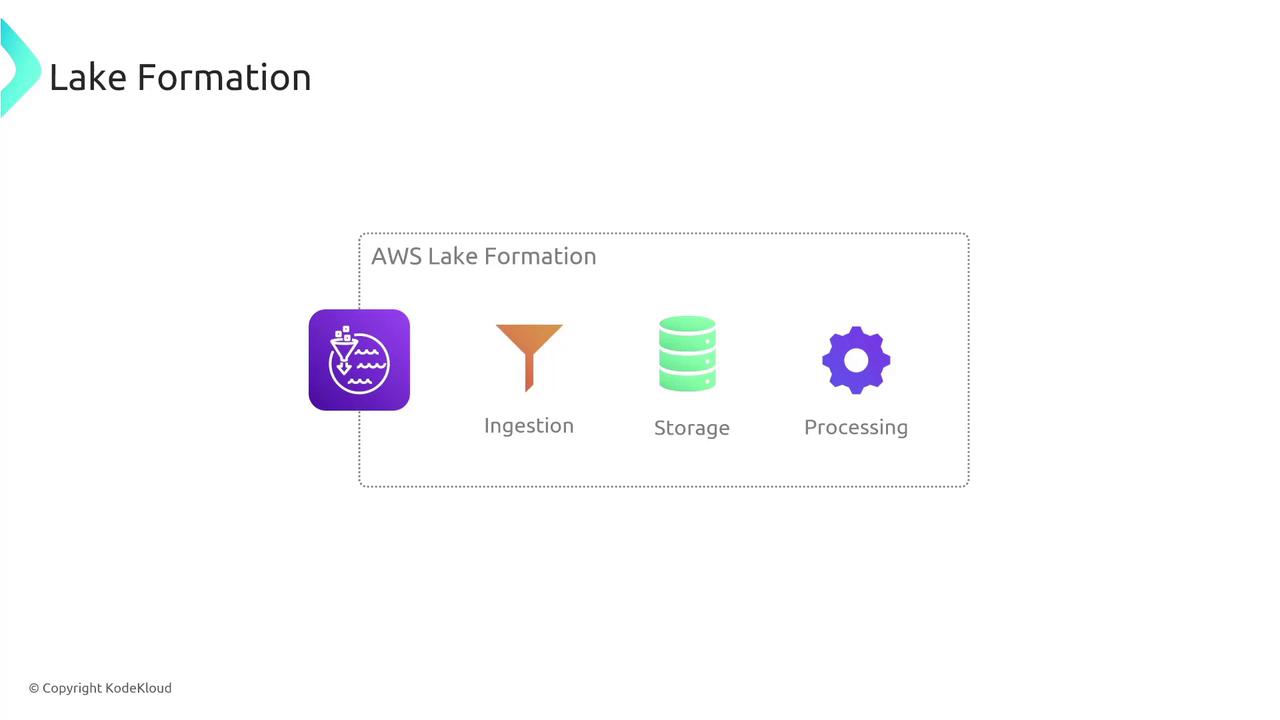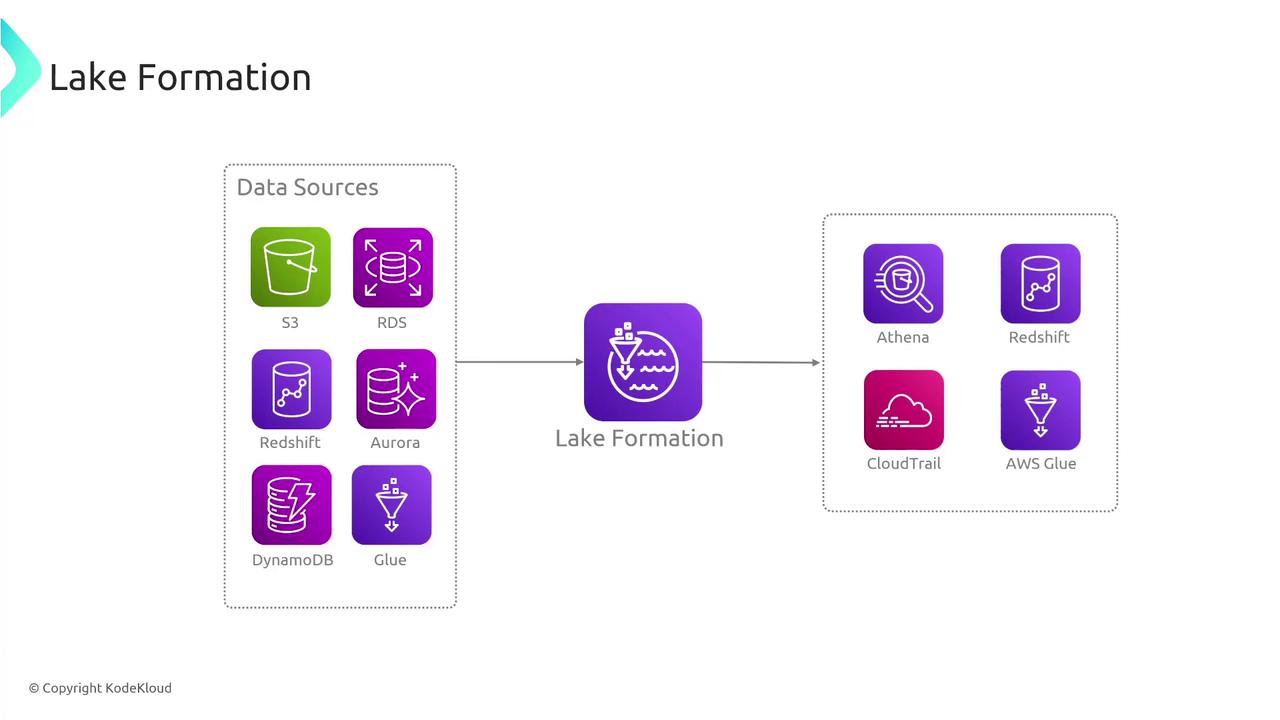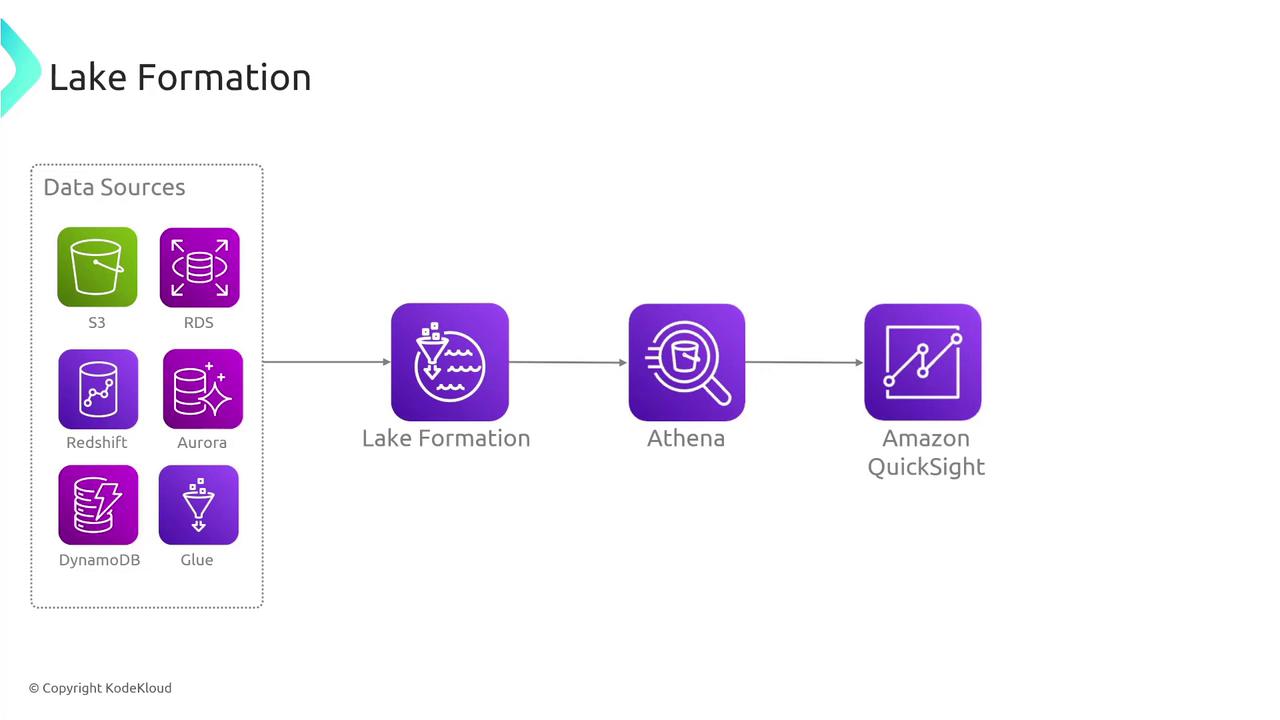AWS Solutions Architect Associate Certification
Services Data and ML
Lake Formation
Welcome back, Solutions Architects. In this article, we explore AWS Lake Formation—a robust service engineered to aggregate and manage your organization’s diverse data sets. Discover how Lake Formation streamlines data ingestion, storage, and processing, and learn how it integrates seamlessly with AWS services such as Athena and QuickSight.
Data Ingestion and Storage
AWS Lake Formation aggregates data from a variety of sources including DynamoDB, Redshift, S3, RDS, Aurora, and even the AWS Glue Data Catalog. The ingestion process operates much like AWS Glue—a serverless data integration service that crawls your data sources to populate the Glue Data Catalog with metadata. This process can be scheduled at regular intervals (for example, every two hours or every 24 hours) to ensure your data lake remains current.
After ingestion, data is centrally stored in S3 in its native format (CSV, TSV, etc.) or in analytics-optimized formats such as Apache Parquet or ORC. These optimized formats greatly enhance query performance, especially when using services like Athena. The data is subsequently cataloged as tables in the Glue Data Catalog, simplifying data management and enforcing granular access control.
The diagram below illustrates the key components of AWS Lake Formation, highlighting data ingestion, storage, and processing:

Data Processing
Once data is ingested and stored, Lake Formation leverages AWS Glue jobs to process the data. These ETL (Extract, Transform, Load) jobs enrich and transform data, preparing it for downstream services such as Athena, Redshift, EMR, or various machine learning platforms.
To summarize the process:
- Data is ingested from multiple sources and registered in the Glue Data Catalog.
- Data is stored in S3 and optionally converted into analytics-optimized formats (e.g., Parquet or ORC).
- AWS Glue ETL jobs process the data, making it accessible for querying and further analysis.
The diagram below outlines the complete architecture, demonstrating how data flows from source systems to processing services:

Integration with Other AWS Services
AWS Lake Formation integrates effortlessly with various AWS services, enabling comprehensive data consumption and analysis:
- Athena: Executes queries on data stored in optimized formats, resulting in improved performance and cost reduction.
- QuickSight: Offers advanced data visualization capabilities by querying Athena, which facilitates dynamic dashboards and in-depth analytics.
- Additional Services: AWS Glue can perform further data transformations, while CloudTrail logs API calls made against Lake Formation for complete monitoring and auditing.
The following flowchart demonstrates how diverse data sources converge in Lake Formation before being analyzed by services such as Athena and Amazon QuickSight:

Key Features of AWS Lake Formation
AWS Lake Formation simplifies the creation of a modern data lake by centralizing data access and employing advanced techniques such as data deduplication through built-in machine learning algorithms. Additionally, the service supports cross-region data replication, enhancing data durability, disaster recovery, and compliance with data residency requirements.
Key Benefits
- Centralized data management and control
- Optimized storage formats for enhanced query performance
- Automated metadata extraction and cataloging via AWS Glue
- Comprehensive monitoring and auditing with CloudTrail integration
The diagram below summarizes the key features of Lake Formation:
![]()
Conclusion
AWS Lake Formation serves as a powerful solution for unifying heterogeneous data sources into a standardized and easily manageable data lake. With integrated support for data transformation via AWS Glue, robust access control mechanisms, and seamless connectivity to analytics tools like Athena and QuickSight, Lake Formation significantly simplifies the process of constructing, securing, and managing your data ecosystem.
By harnessing these capabilities, organizations can ensure their data is always ready for deep analytics and processing, unlocking valuable insights that drive informed business decisions.
Watch Video
Watch video content